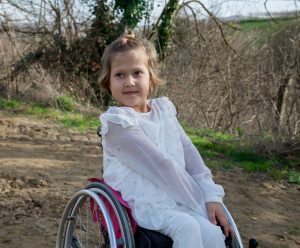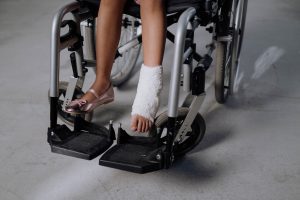We all love to see the joy and excitement that comes from a child riding a scooter. This simple pleasure should be accessible to everyone, including children with special needs. At FamilyHype, we understand the unique challenges they face, and we’re passionate about finding ways for them to join in the fun safely and comfortably.

In this article, we’ll discuss some key features to look out for when choosing a suitable scooter: lightweight design, adjustable handlebars, and extra-wide base. We’ll share our top picks that promote mobility and independence while ensuring safety. Plus, we’ll provide some handy tips on maintaining them so they can bring lasting enjoyment.
Let’s work together to make playtime inclusive for kids with special needs! If you have any feedback or experience to share, please don’t hesitate to comment below. We’d love to hear from you and continue to make FamilyHype a hub of support.
Key Takeaways
- Lightweight design, adjustable handlebars, and extra-wide base are important features for most scooters for kids with special needs.
- Safety features such as reliable brake mechanisms and wearing helmets are crucial for the safety of children.
- Comfort considerations, such as ergonomic design and personalized cushions, should be taken into account.
- Adjustable speeds and training modes can enhance safety, boost confidence, and provide extra support for new or anxious riders.
Understanding Special Requirements
You’ve got to understand that ‘special needs’ is a broad term encompassing a variety of physical, mental, and emotional challenges that can make finding the right scooter a bit tricky. But don’t worry, we’re here to help.
We believe in promoting disability awareness and creating inclusive designs that cater to everyone’s unique requirements. It’s more than just about scooters; it’s about providing equal opportunities for fun and mobility.

Remember our first project? We spent countless hours learning about different abilities and disabilities to ensure our designs met diverse needs. Our goal? A joy-filled ride for every child because they deserve nothing less!
As we move on to discuss specific models, let’s keep safety features at the forefront since they are crucial for our special riders.
Safety Features Of Scooters For Kids With Special Needs
Let’s dive into the critical aspect of safety features, ensuring that everyone can enjoy their ride with peace of mind. As folks who’ve seen first-hand how a well-designed one can bring joy and independence to those with special needs, we know that safety should never be an afterthought.
It’s crucial to look for one with reliable brake mechanisms – this allows riders to control their speed effortlessly and stop when necessary, reducing the risk of accidents.
Now let’s talk about helmet importance. Helmets aren’t just accessories; they’re lifesavers. Encourage your loved ones to always wear one while riding. Remember, it’s better to be safe than sorry.
Next up, we’ll discuss comfort considerations because a great scooter isn’t just about safety – it has to be comfy too!
Comfort Considerations
Imagine sinking into a plush, ergonomically designed seat that cradles you as you glide smoothly down the sidewalk, the breeze lightly ruffling your hair. That’s what comfort should feel like.
Ensuring a cozy ride isn’t just about luxury—it’s about providing an experience that feels personalized and comforting. So, how can we achieve this?
By paying attention to features like ergonomic design and personalized cushions. These components not only enhance comfort but also reduce strain and fatigue during prolonged use. We’ve found that even something as simple as adjustable handlebars or footrests can make all the difference.
As we journey towards making playtime more inclusive, let’s remember that promoting mobility and independence is our ultimate goal.
Promoting Mobility And Independence Of Kids With Special Needs
As we dive into the realm of promoting mobility and independence, we can’t stress enough the importance of adjustable speeds and training modes. We’ve found that these features not only enhance safety but also boost confidence in riders, especially those mastering their skills on a scooter for the first time.
Reflecting on our own experiences as parents and caregivers, we understand how crucial it is to ensure our loved ones feel secure while also encouraging their autonomy. Proper wheels and the right choice of a kick scooter can significantly contribute to this sense of security and freedom.
Scooters With Adjustable Speeds
Scooters with adjustable speeds aren’t just fun, they’re a game-changer for individuals with special needs. They offer them the flexibility to ride at their own comfort level. The customizable speed settings on these scooters allow users to take control of their rides, ensuring safety while still enjoying the thrill of mobility.
The speed regulation benefits extend beyond simple enjoyment. They can foster independence and confidence as riders learn to navigate at different speeds depending on their environment. We’ve found that this adaptability helps individuals feel empowered in their mobility, making each ride an exercise in self-reliance.
In addition to adjustable speeds, some also offer ‘training mode,’ providing another layer of customization and safety for new or anxious riders who need a little extra reassurance while learning to balance and maneuver.
Training Mode
You’ll appreciate the extra layer of safety when you’re just starting out or feeling a bit nervous, thanks to the ‘training mode’ feature on some models. This is an excellent tool for those who are new to scooting or require more support due to special needs.
- Training mode benefits aren’t just about safety; they also boost confidence as you gradually master control and balance.
- You can personalize training modes to fit different skill levels and comfort zones.
- This function enables riders to learn at their own pace, reducing anxiety and increasing enjoyment.
- It’s like having a patient coach with you every time you ride!
With this newfound knowledge, let’s now delve into our top scooter recommendations that cater specifically to those with special needs, keeping in mind the importance of features like training mode.
Top Scooter Recommendations
Imagine the joy on your child’s face when they discover their own independence and freedom with one of these top recommendations for special requirements.
We’ve done our homework to bring you the top choices, focusing on customization and a rigorous durability assessment.
Firstly, look at those that offer adaptability. Customizable elements like adjustable handles, foldable seats, or an adjustable seat can make a world of difference in providing comfort and stability.
Next, don’t overlook durability. These are investments in your child’s happiness and development; therefore, they need to stand up to the adventure ahead.
We believe every child should have access to joyful mobility experiences regardless of their abilities.

Up next, we will share some useful tips on ensuring these wonderful rides stay in top-notch condition for longer enjoyment periods.
Maintenance And Care Tips
Cherishing those empowering moments of freedom and joy on your child’s face is priceless, isn’t it? Now let’s ensure they have an uninterrupted playtime by keeping their favorite ride in tip-top condition with some essential maintenance and care tips.
Firstly, regular cleaning techniques can go a long way. A quick wipe-down after each use helps prevent the buildup of dirt or grime that could affect performance. Remember to use products safely.
Secondly, consider storage options. Leaving the scooter outside can expose it to harmful elements like rain or harsh sunlight that might damage parts over time. Instead, store it inside where it’s dry and temperature-controlled.
It may seem simple, but these steps really do help preserve your child’s mobility independence!
Conclusion
We’ve taken you through the crucial factors in choosing scooters for those with special needs, all with the ultimate goal of providing safety, comfort, and independence. Our top picks reflect these principles.
But don’t forget that maintenance is key to longevity. We want to ensure that everyone gets a chance to experience the joy, freedom, and mobility that comes with a scooter.
When searching, be sure to consider the brand, size, weight capacity, terrain, and budget. We hope our advice helps make the selection easier for you.
Frequently Asked Questions (FAQs)
What To Look For When Buying A Mobility Scooter?
When buying a mobility scooter or electric wheelchair, there are several important factors to consider. Look for durable medical equipment that meets your specific needs, whether it’s a 3 wheel scooter or 4 wheel scooter. Consider the maximum speed, control panel features, and whether the scooter can be disassembled easily for transport. Ultimately, prioritize your medical needs and choose a mobility scooter that provides the necessary functionality and convenience for your mobility requirements.
How Do You Control The Speed Of A Mobility Scooter?
The speed is typically controlled using a control panel or throttle mechanism located on the handlebars. By adjusting the speed settings, users can increase or decrease the speed. Factors such as the model, type (e.g., three wheel or four wheel), and the weight capacity can influence its top speed. It’s important to consult the manufacturer’s guide and any specific instructions from Drive Medical, Pride Mobility, or your private insurance companies to ensure the best and appropriate use of the mobility scooter.
What Speeds Do Disability Scooters Go?
The speed of disability scooters, including outdoor scooters and electric wheelchairs, can vary based on factors such as the model, type, and weight capacity. Standard mobility scooters typically have a top speed ranging from 4 to 8 miles per hour, while heavy-duty models designed for outdoor use may offer higher top speeds, reaching up to 10 miles per hour. The number of wheels can also impact the stability and speed capabilities. It’s important to ensure that the scooter is equipped with appropriate safety features and to operate it within the recommended speed limits to ensure a safe and comfortable riding experience.
What Is The Best Mobility Scooter For Tight Spaces?
The ideal mobility one for tight spaces is typically a compact or lightweight model that offers excellent maneuverability. Handlebar height and other features like a swivel seat or adjustable tiller can enhance maneuverability in tight spaces. Kick scooters might be easier to handle in confined areas, but make sure to consult with a healthcare professional or mobility specialist to find the best electric scooter for your specific space requirements. Three-wheelers are often preferred as they have a smaller turning radius, allowing for easier navigation in narrow or confined areas. Models with features like a swivel seat or adjustable tiller can also enhance maneuverability in tight spaces. It’s important to consider factors such as weight capacity, as lighter scooters may be easier to maneuver, while heavier models may provide added stability for individuals with more weight. Additionally, consulting with a healthcare professional or mobility specialist can help determine the best mobility scooter option for individual needs and specific space requirements.
Are Mobility Scooters Easy To Drive?
Mobility scooters are designed to be user-friendly and easy to drive. Lean to steer mechanisms and simple controls like handlebar-mounted throttles make them accessible for individuals with limited motor skills.
Can You Make Mobility Scooters Faster?
In general, mobility scooters come with preset speed limits designed to prioritize safety. It is not recommended to modify or make them faster, as doing so can compromise stability and increase the risk of accidents. It’s important to operate them at a safe and comfortable speed, especially for the benefit of users who may not have excellent motor skills.
How Are They Powered?
Rechargeable batteries are used to power electric scooters. These batteries supply the motor with the electrical power it needs to move forward or backward. The model, the topography, and usage habits are just a few examples of variables that can affect battery life.
Do They Have Power Steering?
Most do not have power steering. Instead, steering is achieved through manual controls, such as handlebars or a tiller, which allows the user to maneuver it by turning the front wheel.
How Does A Mobility Scooter Brake?
They are equipped with braking systems for safe operation. The braking mechanism can vary depending on the scooter model but commonly includes electromagnetic or regenerative brakes that engage when the user releases the throttle or operates a dedicated brake lever.
When Should You Use A Mobility Scooter?
People who have trouble walking or have limited motor skills should consider using them. Mobility scooters for kids and adults can be utilized indoors in houses or public buildings, outdoors in parks or shopping centers, and for people who have trouble traveling long distances. If you need one, a 3 wheel scooter or 4-wheel option may be suitable; consult a doctor or mobility specialist for guidance.
DISCLAIMER (IMPORTANT): This information (including all text, images, audio, or other formats on FamilyHype.com) is not intended to be a substitute for informed professional advice, diagnosis, endorsement or treatment. You should not take any action or avoid taking action without consulting a qualified professional. Always seek the advice of your physician or other qualified health provider with any questions about medical conditions. Do not disregard professional medical advice or delay seeking advice or treatment because of something you have read here a FamilyHype.com.